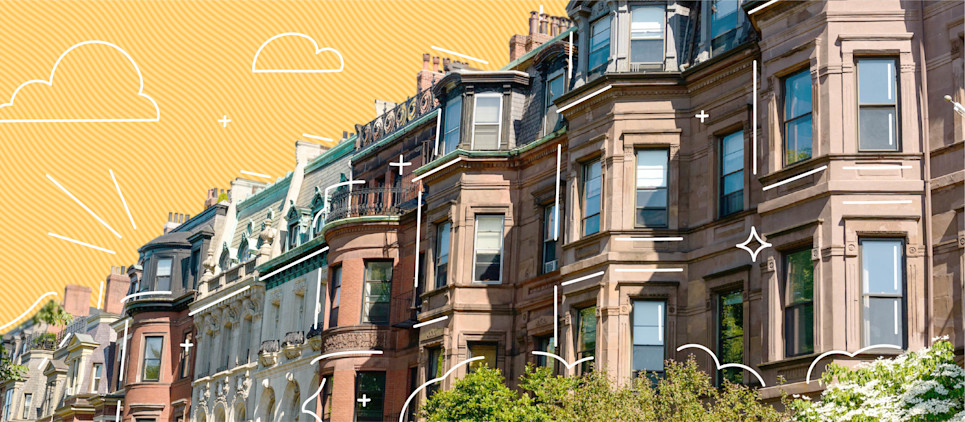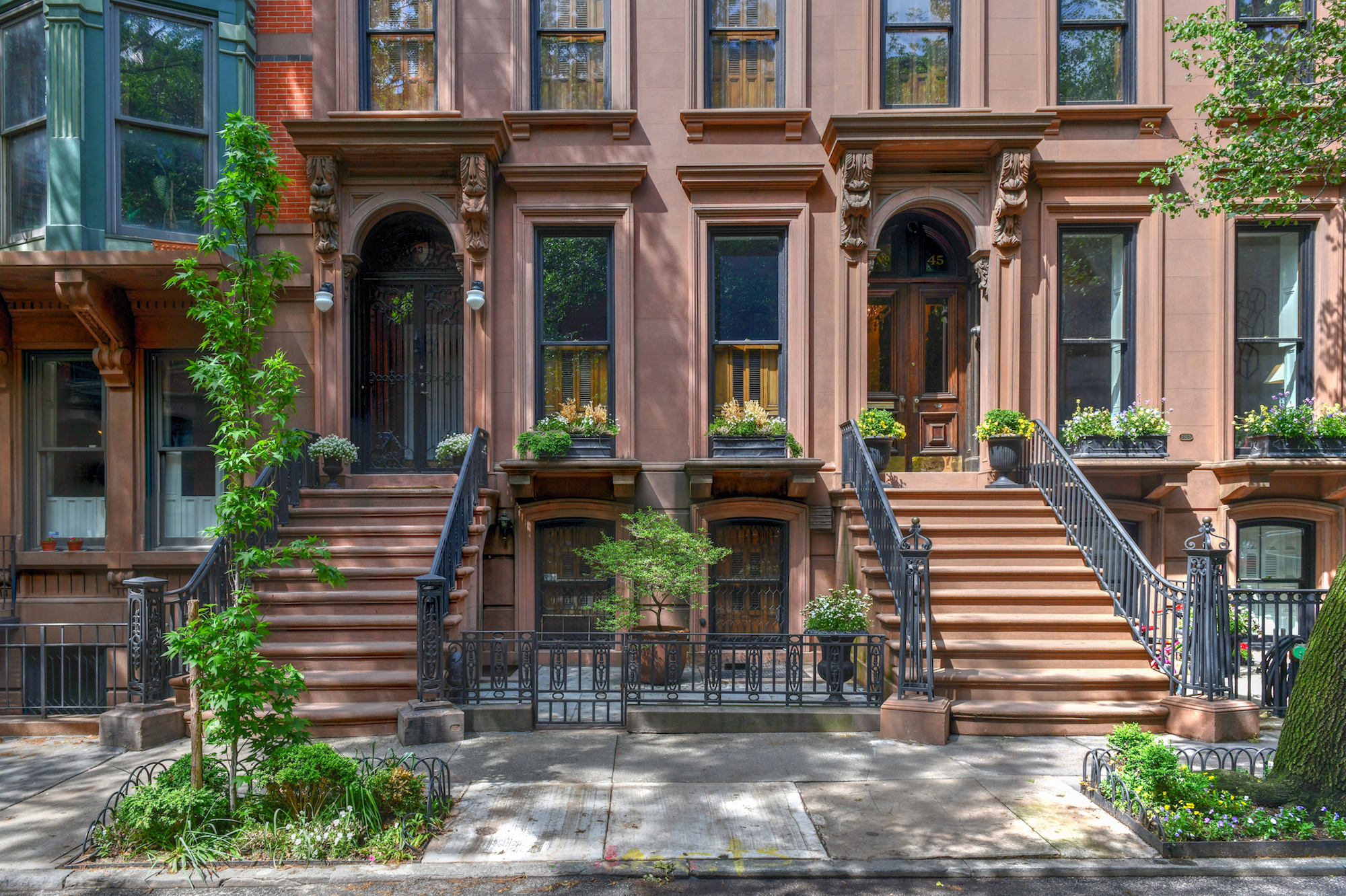What exactly is a brownstone?
If you’ve ever walked down the street in New York City and felt wrapped in the dim glow of history, that’s likely due to the presence of the brownstone townhouses that line many of the city’s streets.
The 19th-century charm these buildings exude is one of the reasons for their desirability on the real estate market, despite the fact that at the time of their construction, they were known for bringing luxury and creativity to the homes of middle class New Yorkers who couldn’t afford marble or limestone facades. As you navigate the rental market of the early 21st century, here’s what you need to know about brownstones.

Table of contents
Where does the name “brownstone” come from?What do brownstone homes look like?Where can you find brownstone homes?Why are brownstones so expensive?What are the pros and cons of living in a brownstone?Where does the name “brownstone” come from?
The term “brownstone” is quite straightforward: The word refers to the brown sandstone used to coat the facades of brick row houses built for single, middle-class families in the early 19th century.
The original brownstone material was most often sourced from the Portland Brownstone Quarry in Connecticut, put on barges, and sent down the Connecticut River and Hudson River until it reached New York. Because it was easy and affordable to cut and carve with steam-powered machines, brownstone soon became a ubiquitous building material across the city.
What do brownstone homes look like?
Even if you’ve never been to New York City, you’ve definitely seen iconic original brownstones in the media (think Mookie’s house in Spike Lee’s Do the Right Thing and Carrie Bradshaw’s West Village pad on Sex and the City).
Beyond their use of brown sandstone (a requirement for a building to be a true brownstone), these buildings have a few other defining features:
Grand stoops, which lift the entrance to the homes above ground level—a necessity during a time when the city’s streets were far less hygienic. This elevated entrance floor is called the “parlor floor.”
Relatively consistent heights of 3-4 floors.
Some brownstone homes have bay windows or rounded nooks.
Where can you find brownstone homes?
Because the building material used to construct the majority of brownstone homes wasn’t very weather-proof, many have deteriorated or need restoration. While brownstones once peppered much of the northeast, when it comes to New York, you’re most likely to find this particular style of building in Harlem, the Upper West Side, and Brooklyn neighborhoods like Park Slope, Carroll Gardens, Fort Greene, Bed Stuy, and Brooklyn Heights.

Why are brownstones so expensive?
Restoring brownstones has become a popular pastime for wealthy homebuyers in New York, partially because large, single-family homes are hard to come by in a city with so little space. The buildings’ iconic look and scarcity have also driven up the prices for buyers, but luckily for renters, many buildings have been purchased by families or local landlords, restored and divided into rental units, and placed on the rental market.
What are the pros and cons of living in a brownstone?
When searching for a rental unit, it’s important to consider the benefits and drawbacks of living in this type of building.
Advantages of living in a brownstone:
Charm. These buildings are the quintessential New York living environment, with spacious stoops and (usually) tall windows.
Neighborhood. Perhaps because of the social nature of stoops, blocks with many brownstones often have a convivial neighborhood feel.
Space. Even if you aren’t getting the whole brownstone to yourself, units typically span the entire floor, or even multiple floors.
Disadvantages of living in a brownstone:
Lack of modern amenities: Since these buildings are old, they may not have central air or updated interiors.
Walk up: Brownstones are almost always walk-ups—meaning there’s no elevator, so you have to walk up the stairs to your unit.
Cost: New York landlords can place a premium on charm, making brownstones more expensive than their less historically significant counterparts.
New York City brownstones are the picture of east coast 19th-century charm, but they certainly aren’t undiscovered—you’re lucky if you find an original to dwell in. If you do, don’t forget to slow down and look out the window once in a while to dream of a different time.
Bungalow housing is made for roommates. We handpick homes that are move-in ready and perfect for shared living, and with roommate vetting and compatibility matching, we help you find people you actually want to live with. Find your Bungalow.
Ready to find your next home?
Move-in ready homes and a built-in community so you can feel at home, together — wherever you are.
Suggested articles



